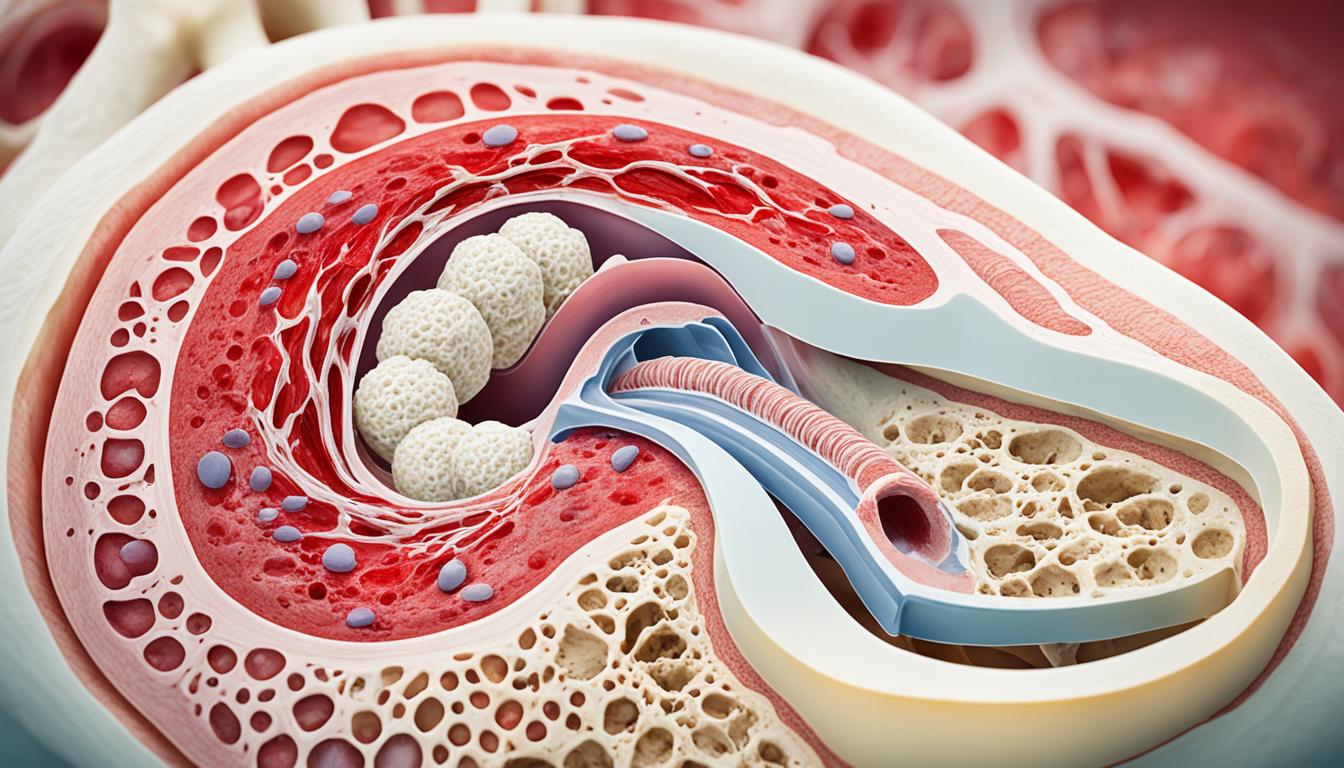Welcome to our in-depth guide on septic arthritis. It’s a hard-hitting disease that targets the joints. This article will cover everything from symptoms to potential treatments, like stem cell therapy. If you’re dealing with joint pain or just want to know more, you’re in the right place!
Key Takeaways:
- Septic arthritis is a rheumatologic condition caused by various microbiological agents.
- Predisposing conditions for septic arthritis include inflammatory arthritis, prosthetic joints, diabetes, HIV infection, hepatitis C, and more.
- Symptoms of septic arthritis include joint pain, swelling, redness, and high temperature.
- Prompt medical attention is crucial for timely diagnosis and treatment.
- Stem cell therapy is an emerging option in the treatment of septic arthritis.
Understanding Septic Arthritis and Joint Anatomy
Joints are key for our body, allowing us to move and bend. To get septic arthritis, you need to know how joints work. This means looking closely at joint anatomy and how it relates to septic arthritis.
A joint is where two bones come together. It has many parts that work as a team. These parts include:
- Cartilage: It’s a smooth, rubbery tissue at the ends of bones. This tissue protects bones and makes moving easier.
- Synovial Membrane: It’s a thin layer around the joint that makes synovial fluid. This fluid helps the joint move without pain.
- Ligaments: These are strong bands that tie bones together. They keep the joint from moving too much.
- Tendons: These tissues connect muscles to bones. They help move the joint and move strength from muscles to bones.
- Bursas: These sacs are filled with fluid and they sit between bones, tendons, and muscles. They stop rubbing, cushion the joint, and let it move easily.
Septic arthritis usually affects joints like the knee, hip, and shoulder. But it can hit other joints, too.
When a joint gets septic arthritis, it’s because of a bacteria infection. This causes swelling and damage. Usually, only one joint gets infected. Getting treatment fast is important to stop any lasting harm.
The picture above shows joint anatomy clearly. Seeing how joints are made helps us understand septic arthritis better.
Causes, Symptoms, and Diagnosis of Septic Arthritis
Septic arthritis is a serious issue caused by a bacterial infection, mostly by Staphylococcus aureus. Sometimes, viruses or fungi can cause it. These germs usually get into the body through a cut, surgery, or an injection.
This illness causes a lot of joint pain, makes the joint very swollen, and you might see redness and feel heat.
Feeling feverish is also common with this condition. Your body’s trying to fight the infection.
Getting treated early is important. To really know if it’s septic arthritis, doctors use various tests. Blood tests show if you have an infection or not. They also check for signs of inflammation.
Analyzing the joint fluid can confirm the infection. Doctors might also take x-rays or do an MRI to look at your joints more closely. These tests help them see if there’s any damage.
If septic arthritis is found and treated quickly, it can help prevent severe joint damage. This also makes the treatment work better.
Common Symptoms of Septic Arthritis:
- Severe joint pain
- Significant joint swelling
- Redness around the affected joint
- Elevated body temperature
- Fever
| Causes | Symptoms | Diagnosis |
|---|---|---|
| Joint infection | Joint pain | Blood tests |
| Staphylococcus aureus | Joint swelling | Joint fluid analysis |
| Bacterial infection | Redness | Imaging tests |
| Viral infection | High temperature | |
| Joint injury | Fever | |
| Surgical procedures | ||
| Injections |
Conclusion
Septic arthritis is a severe issue needing quick medical help. The main aim of treatment is to stop the joint infection from ruining joint function long term. Doctors often give IV antibiotics. They also help with pain. Sometimes, pulling out the infected fluid is needed.
Getting better with physiotherapy is key. It helps joints move and get strong again. By doing specific exercises, physiotherapy boosts joint health. Patients should stick to their therapy plans. This cuts the chance of joints getting stiff or losing movement.
Being diagnosed and treated early is important. Following what the doctor suggests closely is key to success. This includes taking medicines and doing physiotherapy. It helps in getting the best possible result and avoids big issues later on.

